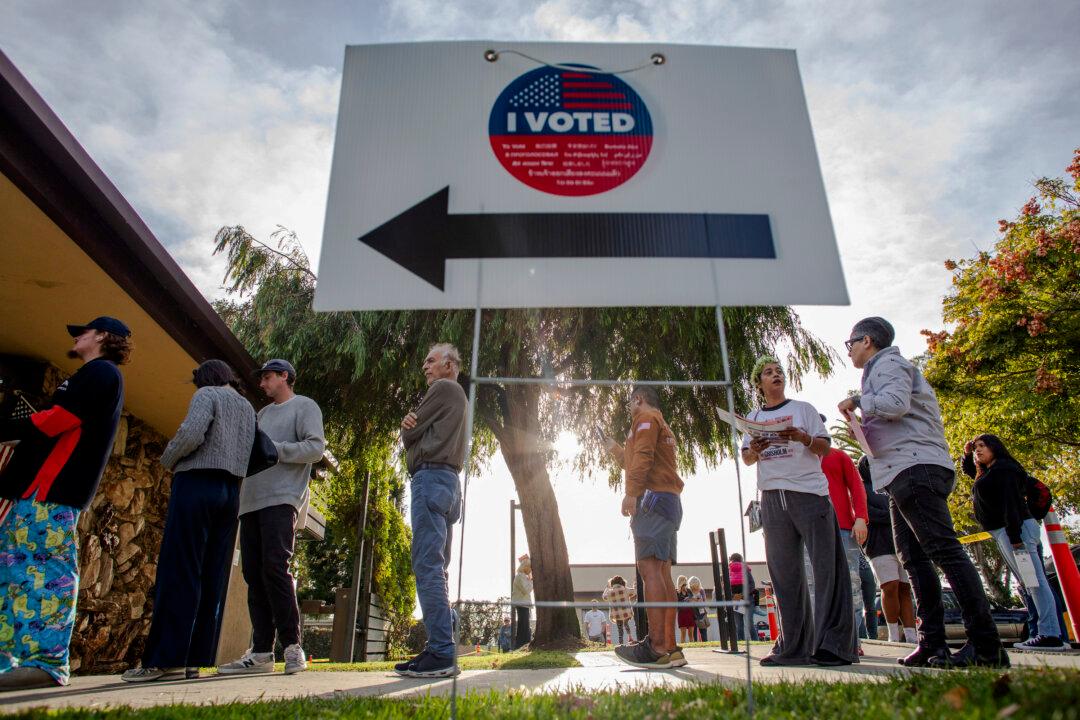This text appeared in the ‘Top Story’ email newsletter sent on Nov. 9, 2024.
This week’s election victory for President-elect Donald Trump marked not just his historic political comeback, but also a broader coalition that included many groups that had not voted for him by the same margins in previous years.One of the most decisive cross-overs for Trump was Generation Z voters aged 18 to 29. Forty-six percent voted for him this year compared to 36 percent in 2020, according to AP VoteCast.
Almost half of Gen Z men, 49 percent to Vice President Harris’s 47, broke for Trump, according to the Edison Research exit poll.
But it was not just with younger voters—Trump also increased his share of support among black voters by 7 percent and Hispanic voters by 7 percent.
The president-elect saw an opening by going on podcasts throughout his busy campaign schedule, including an October appearance on the Joe Rogan Experience, which has millions of subscribers, particularly among Millennials and GenZs.
While his Democratic opponent, Harris, spoke on other podcasts like “Call Her Daddy,” which focuses on young women’s issues, she declined to appear on Rogan at the last minute after her campaign and the host disagreed over the format.
Trump also teamed up with X CEO Elon Musk, who had a 25-point net favorability in an October YouGov poll, with an interview appearance on the billionaire’s social media network that was streamed by millions.
The president-elect has also leaned heavily into meme culture, which is particularly popular among young Americans. And while the Harris campaign tried to do much of the same with “brat” memes inspired by British pop singer Charli XCX, the efforts did not galvanize the same sort of reactions among Gen Z.
Beyond Trump’s presence on nontraditional media, which younger Americans have gravitated to in recent years, exit poll data suggest that most said the economy was the most important issue affecting their votes this year.
Nearly two in five voters named the economy as the country’s most important issue, according to AP VoteCast, with a higher proportion in the battleground states of Georgia, Michigan, Pennsylvania, and Nevada.
While some wondered if abortion would galvanize women in supporting Harris after Trump took credit for overturning Roe v. Wade, he increased his share of women voters aged 18 to 44 by 6 points, while seeing largely the same margins among women older than 45 and suburban women.
Trump’s victory can also be credited to his increase in support among Hispanic Americans, securing 42 percent of the Latino vote in 2024 compared to 35 in 2020.
The National Election Pool exit poll, however, found Trump winning 45 percent of Hispanic voters among 22,800 votes cast in key states, with 54 percent of Latino men backing the president-elect.
Among black voters, Trump secured 16 percent of their vote in 2024, doubling his 8 percent figure from 2020, according to AP VoteCast.
But among white voters, Trump lost some ground, according to the National Election Pool, with him seeing a 3 percent decrease in support among white women since the 2020 election.
Trump also made double-digit gains in two blue states controlled by Democrats—New York and New Jersey—while increasing his margin of votes in California and Illinois compared to four years ago.
After losing New Jersey to then-candidate Joe Biden by 12 percent in 2020, Trump was only trailing Harris by 5 percent in the Garden State as of Friday.
The president-elect also flipped five New Jersey counties red—Morris, Passaic, Gloucester, Cumberland, and Atlantic.
A similar scenario played out in New York, where Biden had won by 23 points in 2020, but Harris had reduced that lead by half—11 percent—as of Friday.
Trump also flipped three New York counties that voted for Biden in 2020 and Hillary Clinton in 2016—Nassau, Clinton, and Rockland, according to election data, while also winning Broome and Essex, which Biden had won but Clinton had lost.
Within New York City, long considered a Democratic stronghold, Trump saw a 5 percent increase in Brooklyn, a 10-point increase in Queens, an 11 percent increase in the Bronx, and a 5-point increase in Manhattan.
Trump improved in Illinois as well, increasing his 40 percent of support in 2020 to 45 percent this year.
Even though California still has millions of ballots left to count, Trump is on track to increase his margin by 5 percent since 2020, garnering 39.8 percent of the vote so far, compared to 34.2 percent four years ago.
Although many factors led to Trump’s 2024 win, the president-elect’s appeal to key voting groups likely pushed him across the finish line in the states that mattered.






